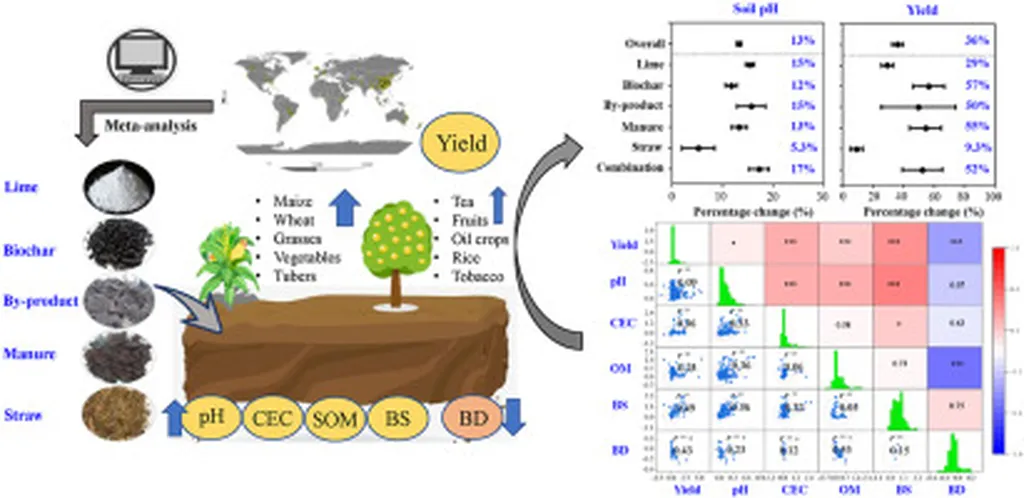In the face of escalating soil acidification, a silent threat to global agriculture, researchers have uncovered a promising strategy to combat this challenge and boost crop yields. A recent study published in *Chemical and Biological Technologies in Agriculture* reveals that a combination of sodium carboxymethylcellulose (CMC) and desulfurized phosphogypsum (DP) can significantly enhance soil fertility and maize productivity, offering a beacon of hope for farmers grappling with infertile acidic soils.
Soil acidification, a widespread issue, impairs crop growth by increasing the concentration of phytotoxic exchangeable aluminum ions (Al³⁺). Traditional soil amendments like lime and biochar have limitations, driving the need for more sustainable and effective solutions. The study, led by Debo He from the Institute of Mountain Hazards and Environment at the Chinese Academy of Sciences, explores the potential of CMC and DP as a novel soil amendment.
The research team conducted pot experiments and employed microbial sequencing and molecular modeling calculations to assess the impact of CMC and DP on soil fertility and maize yield. The results were striking. The combined application of CMC and DP reduced soil exchangeable Al³⁺ by up to 79.60%, while increasing base ion concentration by up to 102.27% and acid buffering capacity by up to 49.55% compared to the control.
“This significant reduction in phytotoxic Al³⁺ and enhancement in base ion concentration and acid buffering capacity creates a more favorable soil environment for plant growth,” explained He. The amended soil also exhibited a 48.65% increase in photosynthetic rate and a remarkable 155.48% increase in the weight of 100 grains, demonstrating the profound impact on maize yield.
The study delved into the underlying mechanisms, revealing that CMC immobilizes Al³⁺ and releases base ions through competitive electrostatic attraction and complexation. Moreover, the application of CMC and DP promoted the direct enrichment of microbial communities, increasing the abundance of functional microbial taxa such as Acidobacteriota, Gemmatimonadota, and Ascomycota. These microbes play crucial roles in organic matter decomposition and phosphorus metabolism, further enhancing soil fertility.
The commercial implications of this research are substantial. With soil acidification affecting vast swathes of arable land, the development of cost-effective and sustainable soil amendments like CMC and DP could revolutionize agricultural practices. Farmers could see improved crop yields and reduced input costs, while the environment benefits from reduced reliance on conventional amendments with higher environmental footprints.
“This research not only provides a practical solution for mitigating soil acidification but also offers a deeper understanding of the synergistic biological and molecular mechanisms at play,” said He. “It paves the way for the development of more effective soil amendments and application strategies to ensure cropland health and promote sustainable agriculture.”
As the agriculture sector grapples with the challenges of climate change and soil degradation, innovations like this offer a glimmer of hope. The study’s findings could shape future developments in soil remediation technologies, driving the agriculture sector towards a more sustainable and productive future. With further research and commercialization, the combined use of CMC and DP could become a game-changer for farmers worldwide, enhancing soil fertility and crop yields while mitigating the impacts of soil acidification.

